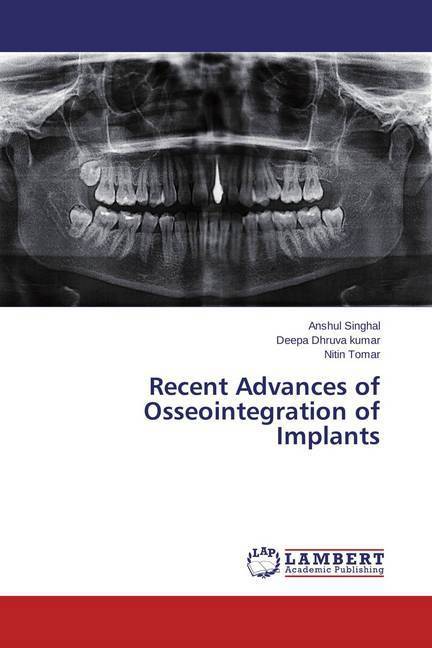
- Afhalen na 1 uur in een winkel met voorraad
- Gratis thuislevering in België vanaf € 30
- Ruim aanbod met 7 miljoen producten
- Afhalen na 1 uur in een winkel met voorraad
- Gratis thuislevering in België vanaf € 30
- Ruim aanbod met 7 miljoen producten
Zoeken
Recent Advances of Osseointegration of Implants
Anshul Singhal, Deepa Dhruva kumar, Nitin Tomar
Paperback | Engels
€ 60,95
+ 121 punten
Omschrijving
Scientists have for a long time been researching materials and techniques for providing predictable, efficient and effective methods of restoring a depleted dentition. The process itself is complex, and many factors influence the formation and maintenance of bone at the implant surface. The most versatile is Osseointegration. It is the basis of successful endosseous implantology. The purpose of this review is to give brief knowledge on the osseointegration of implants. Titanium and its alloys are the metals of choice for endosseous implants. Implants categorised into threaded and non-threaded, threaded implants play an important role in increasing mechanical osseointegration. Studies have shown that implant-tissue interface can be influenced by different methods of surface treatment which enhances the osseointegration at early implantation sites. Various pharmacological agents, growth factors and bone morphogenetic proteins have also been developed for the regeneration
Specificaties
Betrokkenen
- Auteur(s):
- Uitgeverij:
Inhoud
- Aantal bladzijden:
- 148
- Taal:
- Engels
Eigenschappen
- Productcode (EAN):
- 9783659684913
- Verschijningsdatum:
- 12/02/2015
- Uitvoering:
- Paperback
- Afmetingen:
- 150 mm x 220 mm
- Gewicht:
- 227 g

Alleen bij Standaard Boekhandel
+ 121 punten op je klantenkaart van Standaard Boekhandel
Beoordelingen
We publiceren alleen reviews die voldoen aan de voorwaarden voor reviews. Bekijk onze voorwaarden voor reviews.








